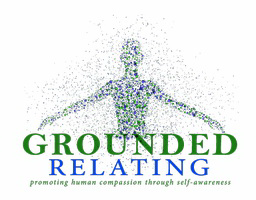Taking the Enneagram journey
The Enneagram journey is not for everyone. It’s intense, and intensely personal. The Enneagram journey is also robust, with plenty of detail and even more nuance. Ready to take a mind-blowing trip? Let’s take a look at how the Enneagram journey informs us about Form Identity and Essence Identity.
It seems true that we humans have a physical Form Identity who walks around in daily life, eating, sleeping, brushing our teeth, having emotions, etc., and all the other things we do from week to week. The Perennial Wisdom movement—found in literature, art, and music throughout the millennia—also clearly suggests that there is a spiritual dimension to humanity, or an Essence Identity.
Oscar Ichazo laid Enneagram journey foundations
The indication seems to be, Yes-AND!, we are both: human 3-D Form Identities walking on the earth and spiritual dimension Essence Identities. The Enneagram can actually reveal quite a lot about how these two identities simultaneously exist, form and function in our daily lives.
The Oscar Ichazo (Read about the Enneagram historical origins) graphics posted on The Enneagram Institute website are really useful for getting the big picture of how the universal Enneagram symbol works and is nested like a set of Russian dolls. Trying to put the Ichazo graphics into words on the 2-D page, is difficult at best. Attending an Enneagram training or a Narrative Tradition panel event would be the most helpful. In lieu of that, a brief description will follow.
Each of the nine Enneatypes enjoy a formulaic struggle that maps to the Enneagram symbol, and can be reproduced by logic and cognated on, at will. This is the Enneagram journey map, and one of the many uses for the Enneagram. With this reproducible and logical map of formulaic struggles, the hope is that at any moment in time, every one of us can discern the way back to peace or bliss.
Core Enneatypes mark out turning points along the way
The Enneagram’s 3-6-9 triangle is a nested set of the three Core Enneatypes. The Performer (3), The Devil’s Advocate (6) and The Mediator (9) are, respectively, the Core Enneatypes of the Heart, Mind and Body Centers of Intelligence. Each Core Enneatype (3-6-9) possesses two variation Enneatypes on either side (2-3-4; 5-6-7; 8-9-1). Every individual will prefer one particular home base or number (1-9) on the Enneagram. This home base can be a Core Enneatype (3-6-9) or a variation Enneatype (1-4-2-5-8-7). Either way, all Enneatypes map back to the appropriate Core Enneatype. The symbol itself maps out the Enneagram journey for each type.
The symbolic energetic process made visible by the Enneagram symbol is also marked out in the Ichazo graphics mentioned above. All these numbers and all these processes are all part of the Enneagram journey. This Enneagram journey can be teased out into words in an endless fashion; but, essentially the Enneagram journey is the same for all of us, in that it can transmute our base consciousness-state to one of a higher spiritual dimension and quality. And this is where it gets complicated.
Higher Essence qualities and Ego Distortions
The Ichazo graphics mentioned above describe the “relationship between Higher Essence qualities and Ego Distortions.” In our case, we might substitute Essence Identity for Higher Essence qualities, and Form Identity for Ego Distortions. We know that the Enneagram talks about Mind, Heart and Body Types. Each of these types has an energetic component, one might say: Body Types have a Gut-based instinct; Heart Types have a Passion-based instinct; and Mind Types have a mental component Fixation-based instinct. (Words will only get us so far, but our human instinct is to try, remember? So we will try these words on for size. No problems, right? Good! )
Now you have to add into the mix the fact that Heart Types (2-3-4) are focused on feelings and worth which gives us the word shame. This shame shows up by avoiding emotions, focusing on other’s emotions, or dramatizing emotions. Body Types (8-9-1) are focused on power or rightness which gives three distinct ways to manage anger: always available, always asleep, or ready to metabolize a righteous cause. And the Mind or Head Types (5-6-7) are focused on fear, with a distinct preference for putting fear anywhere but in their conscious mind. So where does all that fear go? That energy of fear is channeled into creating pleasant options, managing the dangers of the world, or disappearing and not being felt.
Fight, flight and freeze along the Enneagram journey
Essentially, all Centers of Intelligence evidence a form of fight, flight or freeze. Another way to say that is: all three Centers of Intelligence reveal a strategy, in some form, of advance, retreat, or ignore. Each of the Centers of Intelligence—and in turn, also each of the nine types—develops a focus (or fixation) on a particular emotional content, which they then actively choose to either avoid, forget, or move towards. There are many ways to meet a need, and even more ways to describe or say the same thing. (Books have been written on this topic. Peter O’Hanrahan’s online article The “Enneagram Defense System” is another excellent resource.)
What happens to Essence Identity or the Higher Essence qualities when the emotions of shame, anger or fear take the spotlight and are being metabolized? Well, there’s only so much bandwidth! When these automatic processes of shame, anger or fear are in play, without additional focus or attention, the bandwidth for Essence Identity gets squeezed out! It is said the mind can only hold one object of attention at a time. To clarify, if the mind is focused on shame, then there is little room for Essence Identity to be fully experienced. Even so, an individual’s Essence Identity is still available, and hanging around; the shame just relegates it to a minor bandwidth, hidden, off in some corner.
How does it all play together? With Virtues and Holy Ideas
To understand the Enneagram journey fully, the constructs of the Virtues and the Holy Ideas need to be embraced and understood. Until now, we have been dealing with the Fixations and the Passions of the Enneagram. See the chart “Enneagram journey: from Ego Fixation to Holy Idea” below, which also includes the Virtues or the Antidote. This is where the Enneagram gets very dynamic with its capacities for creating life road maps. Sometimes this dynamism makes it hard to catch a freeze-frame of the internal workings of the Enneagram. Again, we will try.
Basically the theory of the Enneagram journey goes like this: Loss of the Holy Idea causes characteristic Ego-Fixation. Loss of Virtue causes characteristic Passion (as stated on The Enneagram Institute webpage with the Ichazo body graphic of the Enneagram energetics flow). The ultimate goal is to get to the higher mind state of the Holy Idea, which also shows up in nine distinct flavors. In truth, the reality is closer to having moments of experience in the Holy Idea mind state. This Holy Idea mind state, or consciousness-state, may be similar to, or part, of the spiritual dimension Eckhart Tolle refers to when he speaks of Essence Identity.
Putting the whole Enneagram journey together
To put that whole Enneagram theory construct into play, let’s use the Heart Types as an example. Each of the three Heart Types struggle with shame, in some form of Identity. The Performer (3) as the Core Enneatype of that Center of Intelligence presents the Identity Passion as Vanity, for instance around material possessions. (“Heart Types yellow brick road of shame” may also shed light on the Enneagram journey for those who share this Center of Intelligence.)
The Perfomer’s (3) Chief Feature or Fixation centers around the word Deceit, which may be better understood as self-deceit. As a Core Enneatype, The Performer (3) archetypally represents the human struggle to have an identity. Everyone, regardless of type knows what it means to have an identity of success or failure. For the Enneatype Three however, this image is their central home base, to which everything is compared.
On the other hand, there are the Variation Image Heart Types, who still struggle with Identity and feelings, but in slightly different ways than The Performer. The Helper (2) as a variation Enneatype, takes the energy of shame and Identity, and channels it into the Passion of Pride, personally becoming everything to everyone. The Helper’s (2) Chief Feature or Fixation centers around the word Flattery, a form of giving to get.
The Tragic Romantic (4) takes that shame energy and turns it into the Passion of Melancholy or moodiness, unable to be satisfied. The Tragic Romantic’s (4) Chief Feature or Fixation becomes Envy, with a focus on what’s missing or how the grass is greener on the other side of the fence. The Enneagram journey for each of these types might look like the following. (Similarly, each of the Enneatypes will present a Passion and a Chief Feature or Fixation.)
Applying the Antidotes on the Enneagram Journey
The Antidote, or turning point, for The Performer (3) is honesty; for The Helper (2), Humility; and for The Tragic Romantic (4), Equanimity or balance. Each of these Antidotes when applied or experienced in situations, can lead to a Holy Idea state of Hope for the Performer (3); Will or Freedom for The Helper (2); and Origin Source for The Tragic Romantic (4).
Although the clip below is a little different than the usual Grounded Relating Monday Music Challenge, it is still germane. This video explains one take on an “Enneagram of Process” for business analysis. This is an interesting bird’s eye, or big picture view which dovetails nicely with this idea of an overall Enneagram journey.
Enneagram nests and teases out perspective
This article you are reading now looks at the personal Enneagram journey, where this video clip is using the Enneagram to take a systems view picture, another nice Yes-And! dove-tailing. Remember that the Enneagram is like a nest set of Russian dolls, and has been purported to contain the study of the whole Universe within its simple symbol?
Enjoy “The Enneagram as a journey map” posted by Steven Zuieback on YouTube. And while you are at it, why not consider embarking on your own personal Enneagram journey? Grounded Relating will be here to help! (Also, don’t forget to check out the “Enneagram Journey from Ego Fixation to Holy Idea” chart below, after the video.)
Enneagram Journey from Ego Fixation to Holy Idea






